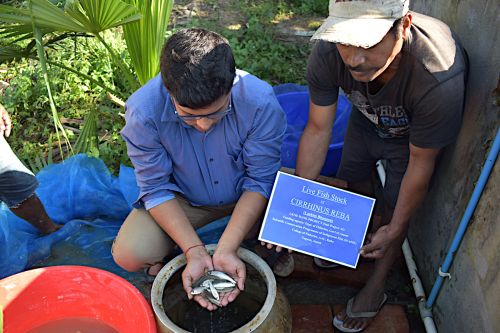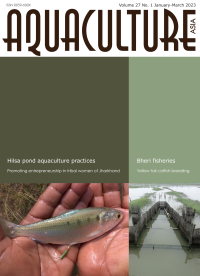Captive breeding and larval rearing of Cirrhinus reba, a small indigenous fish of aquaculture importance
22 February 2023 | Kaustubh Bhagawati, Sushanta Borthakur, Pronob Das, Sangipran Baishya, Pabitra Kr Saharia, Bipul Phukan, and Binod Kalita | 863 Downloads | .pdf | 3.21 MB | Freshwater finfish, Hatchery and nursery, India
Cirrhinus reba or ‘reba carp’ is a commercially important indigenous minor carp species distributed over south Asia. It is highly popular among consumers and fetches a better price than the major carps. A herbivorous species, C. reba can easily digest plant protein sources. Marketable size is 100-300 g as compared to 700g - 1.5 kg for major carps. It has been identified as a priority species for aquaculture diversification in India and has great scope for incorporation in carp culture and polyculture systems.
This article describes techniques for captive reproduction and larval rearing of C. reba, based on research by the College of Fisheries, Assam Agricultural University, Raha.
Creative Commons Attribution.

